Haryana’s GEOA 2025: A Boost for Captive Solar Plants and Wind Energy Developers
Haryana’s GEOA 2025: A Boost for Captive Solar Plants and Wind Energy Developers
The Haryana Electricity Regulatory Commission (HERC) introduced new changes to Green Energy Open Access (GEOA) in February 2025. These updates are expected to streamline renewable energy adoption in the state, making it easier for industries and large consumers to tap into solar and wind power.
But what exactly do these regulations mean, and who benefits the most? Let’s break it down step by step.
What is Green Energy Open Access?
Green Energy Open Access is a policy framework that allows electricity consumers to directly buy renewable energy (like solar and wind) from the open electricity market, rather than being completely dependent on the DISCOMs.
In simple terms, the businesses and industries can source clean energy at competitive prices. This lowers the electricity bills and helps them achieve sustainability targets by reducing dependencies on fossil fuels.
GEOA has introduced special facilities for industries that have distributed electricity facilities across multiple factories. This ensures flexibility for consumers to choose where to buy power from. It simultaneously creates demand for renewable developers by encouraging more green projects.
What Was the Previous Regulation?
The Green Energy Open Access regulations, which were implemented in 2023, had some restrictions. Highlighted key points are:
- Charges involved: Wheeling charges, cross-subsidy surcharges, and additional fees made renewable open access costlier for many users.
- Limited scope: Consumers could not always use renewable power flexibly across different units or facilities.
Many medium-sized businesses and captive power plant owners could not benefit fully due to high entry barriers and cost restrictions.
What Are the New Changes in the Implementation?
The 2025 regulation update by HERC has made key improvements that have boosted renewable adoption:
- Flexibility across facilities: Consumers with multiple units can now club their sanctioned load under the same electricity operation division of the distribution, if above 100 kW.
- Rationalized charges: Cross-subsidy and other charges have been simplified, making renewable power more cost-competitive.
These changes mean that even smaller industries, educational institutions, hospitals, and commercial buildings can now adopt green power without facing heavy restrictions.
Who Can Benefit?
The new regulations bring direct advantages to a wide set of consumers and stakeholders:
1. Industrial Consumers with Multiple Units
Industries with multiple factories and offices across different sites can now pool the entire load and opt for cheaper renewable energy.
2. Captive Power Plant Owners
Businesses with their own solar plants can easily transfer and sell power across other facilities and in the open market.
3. Solar & Wind Developers
The demand for renewable projects is now slowly growing, with additional help from the government, providing larger markets for the developers and offering open access.
4. Consumers on Shared Feeders
With shared electricity lines, now you can participate under the new framework and expand the reach for open access.
Conclusion
The 2025 HERC regulation changes mark a big step towards making renewable energy more accessible in Haryana. This not only supports India’s renewable energy targets but also gives industries a clear pathway to cut costs and meet sustainability goals.
At Smart Roof Solar, we help businesses and institutions navigate such policies and make the switch to solar smoothly. If you’re considering going green and want expert guidance, connect with us today, and let’s make your energy transition smart, affordable, and future-ready.
FAQs
Q1. Can consumers switch between DISCOM supply and open access?
Ans: Yes, it is possible, but it is important to follow the HERC’s switching protocols and timelines.
Q2. Are rooftop solar systems eligible under GEOA?
Ans: Rooftop solar systems are eligible only if they fall under any group arrangement.
Q3. Is there a cap on how much renewable energy a consumer can buy?
Ans: There is no fixed cap, but the arrangement must align with sanctioned load and grid availability.
Q4. How long does it take to get GEOA approval?
Ans: The actual timelines may vary, but HERC aims for approvals within 15–30 days.
Q5. Are banking facilities allowed under GEOA in Haryana?
Ans: Banking provisions are limited; consumers must align generation and consumption closely.
Suggested Articles

UP Electricity Tariff Increase 2015-16: Rates Rise by Rs 0.40–1.00 per Unit – What Consumers Need to Know
Uttar Pradesh has increased electricity tariffs for 2015-16, ranging from Rs 0.40 to 1.00 per unit. This update explains the revised rates, the sectors affected, and what consumers need to know about the tariff hike.

Generation Based Incentive Proposed for Rooftop Solar in Haryana
Haryana plans to offer Generation Based Incentive (GBI) for rooftop solar installations, promoting clean energy adoption and reducing electricity costs for consumers.
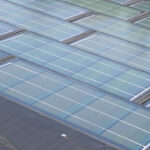
Should You Replace Solar Panels with Solar Shingles?
Discover how solar batteries store excess energy, maximize your solar system’s efficiency, and provide reliable power during outages. Learn about the types, benefits, lifespan, and maintenance tips to make the most of your solar investment.
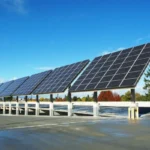
Should You Switch to Solar in India? Complete Guide
India has become a hot-selling solar market and people are interested in installing solar systems in their homes as well as in industries and factories.

Updated Rates of Solar Subsidy in Delhi: Cost, Eligibility & Benefits
Discover the latest solar subsidy rates in Delhi for 2025. This guide explains the updated costs, eligibility criteria, and benefits to help you maximize savings on your rooftop solar installation.
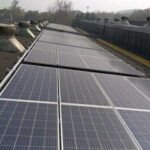
How to Improve Solar Panel Performance for Optimal Energy Output
Performance degradation in solar panels reduces energy output over time. This guide explains how to factor in degradation when calculating annual yields, ensuring accurate estimates for residential, commercial, and industrial solar installations.
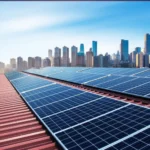
Solar Sector Growth in India Slows as Investments Decline in Q1 2023
India’s solar sector experiences an investment slowdown in Q1 2023, reflecting challenges in funding and growth for renewable energy projects.
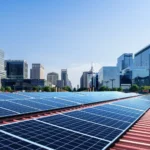
UP Government Incentive: Stamp Duty Exemption for Solar Land
Uttar Pradesh offers stamp duty exemption on land for solar projects, encouraging investment and growth in renewable energy.